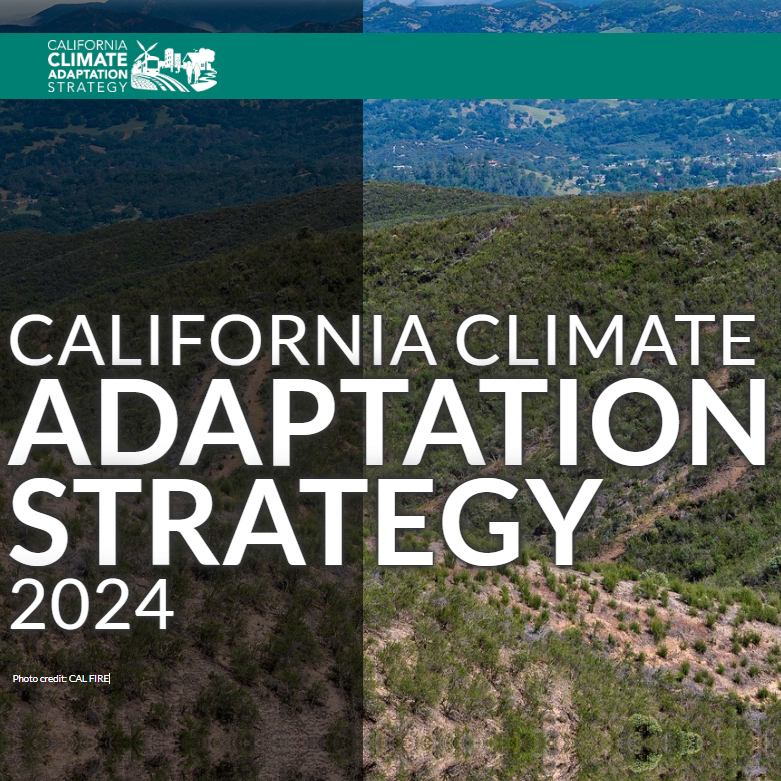Governor Newsom Unveils California’s Updated Climate Adaptation Strategy
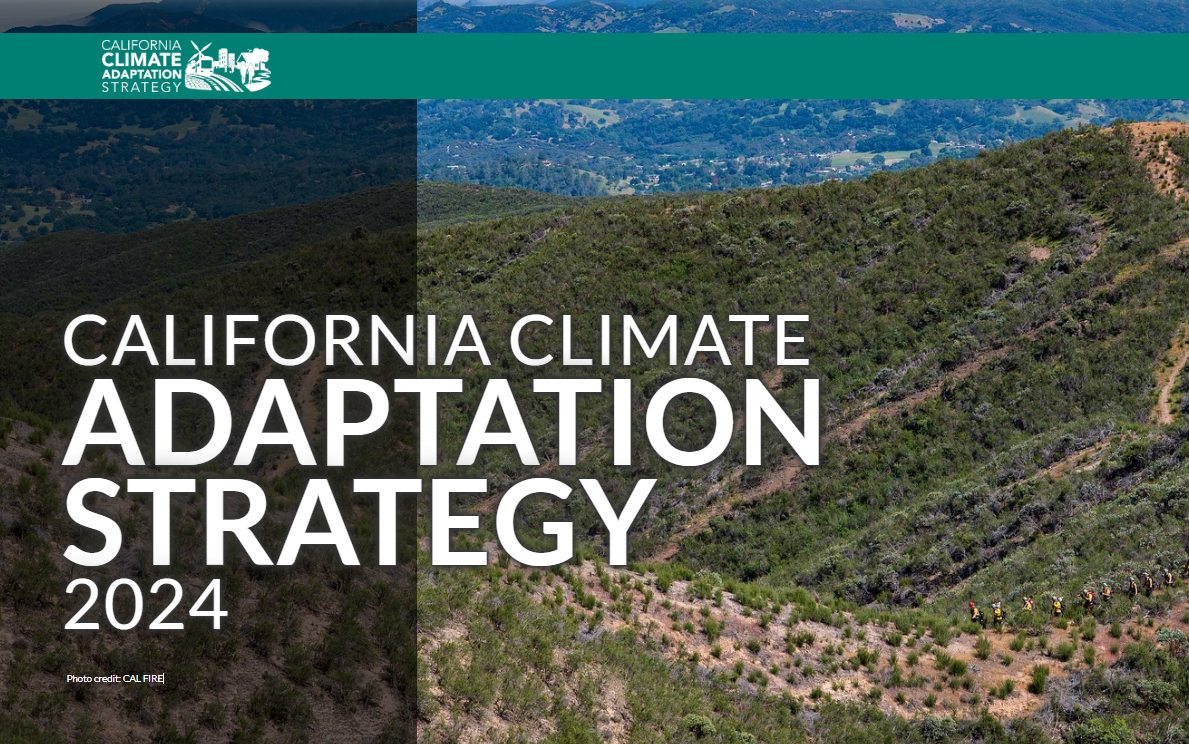
Governor Newsom Unveils California’s Updated Climate Adaptation Strategy
September 4, 2025 – Governor Newsom unveiled California’s updated Climate Adaptation Strategy — the state’s overarching framework to better protect communities and nature from dangerous climate impacts. California last updated the Strategy in 2021. The updated strategy sets strategic direction through six priorities:
- Protecting communities most vulnerable to climate change
- Improving public health and safety to protect against increasing climate risk
- Building a climate-resilient economy
- Expanding nature-based climate solutions and strengthening the resilience of natural systems
- Making decisions based on best available climate science
- Partnering and collaborating to leverage resources
These priorities are supported by cross-cutting climate resilience actions, each with associated success metrics. The strategy aligns with and builds on the goals set forth by California’s Wildfire and Forest Resilience Action Plan and includes the following actions specific to wildfire resilience:
- Prioritize actions that reduce wildfire risks to California Native American tribes and climate vulnerable communities.
- Support wildfire-prone communities by increasing the capacity of local and regional partnerships to build and maintain a pipeline of forest health and fire prevention projects.
- Invest Community Development Block Grant Disaster Recovery funds in long-term disaster recovery and resilience building that targets the unmet housing recovery needs of low and moderate-income households in a way that mitigates disaster risk and reduces future losses among vulnerable communities.
- Reduce health impacts of wildfire and prescribed fire smoke.
- Reduce the risk of energy infrastructure-related ignitions that lead to catastrophic wildfire.
- Bring to scale a thriving forest and wood products market in California that leverages public investments by energizing private capital for sustainable forest management, regional economic recovery, and climate resilience.
- Increase the pace and scale of wildfire resilience and forest health projects.
- Reduce risks of wildfire through increased use of fuel breaks and fuels reduction.
- Assist the federal government in scaling up forest treatments by supporting collaborative forest management and encouraging landscape level planning.
- Coordinate and guide prescribed fire and cultural fire activities and address the key barriers to its widespread use in California.
- Expedite permitting processes for wildfire and forest resilience projects using exemptions or the California Vegetation Treatment program.
- Invest in science-based management focused on climate resilience of California’s fire adapted landscapes.
- Improve wildfire smoke guidance for schools, children, and other vulnerable populations. Develop outreach materials for health care providers and the public on wildfire smoke health effects and ways to decrease exposure.
- Collaborate with federal, state, tribal, and private partners to increase pace and scale of restoration of fire-adapted lands and maximize the climate resilience benefits of these treatments.
- Leverage federal funding to support fire-hardening roads and communities.
California Extends Timeline for Some On-the-ground Fuel Reduction Work Eligible for Streamlining
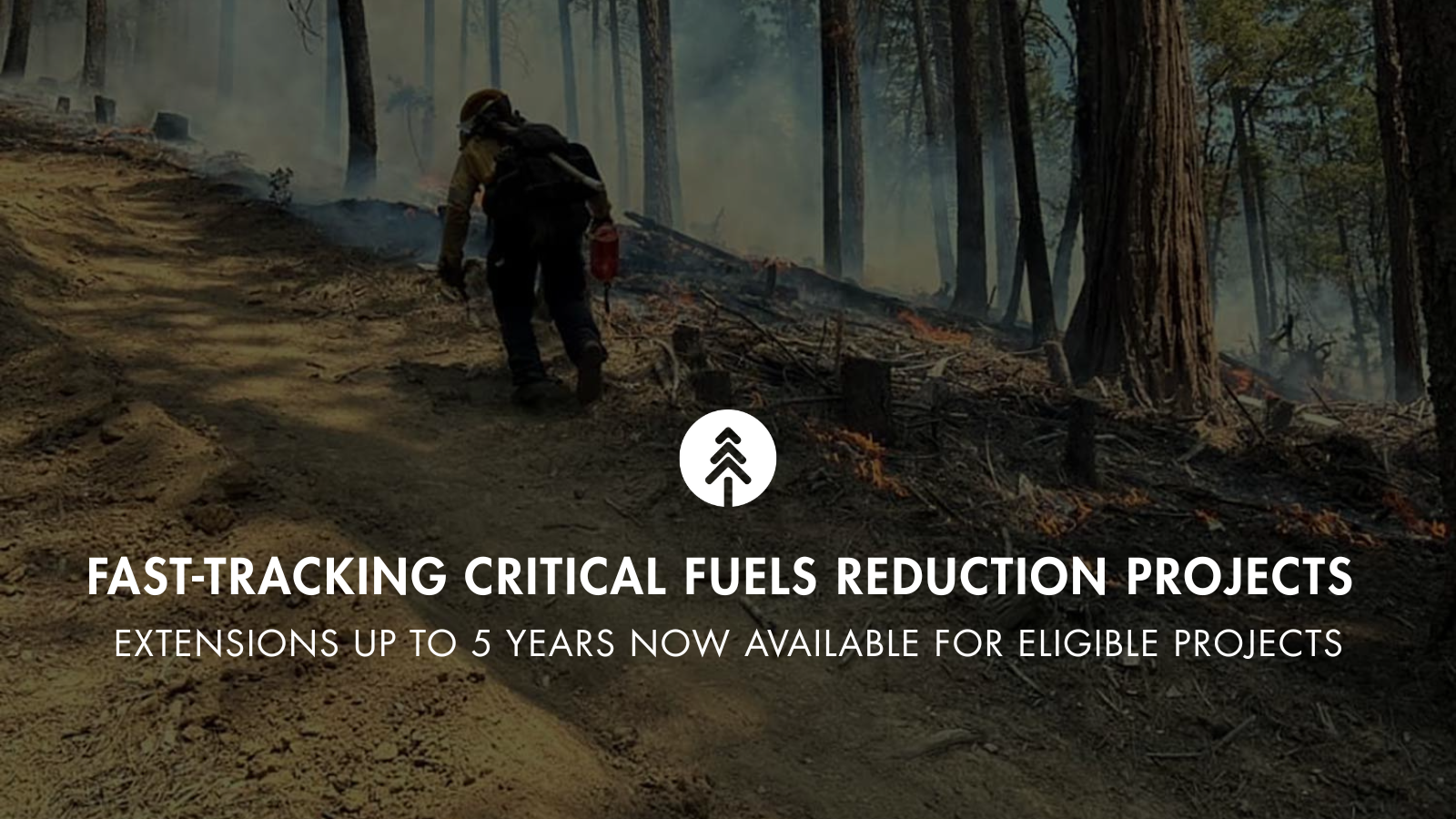
California Extends Timeline for Some On-the-ground Fuel Reduction Work Eligible for Streamlining
Following Governor Newsom’s Emergency Proclamation on wildfire, the California Natural Resources Agency (CNRA) and the California Environmental Protection Agency (CalEPA) have approved over 100 critical fuels reduction projects spanning tens of thousands of acres across the state, moving at record pace while also ensuring environmental protections are being upheld.
Recognizing that reducing wildfire risk to landscapes and communities may require multiple stages of treatments, California recently extended regulatory suspensions to allow qualifying long-term fuels reduction projects up to five years from commencement to complete on-the-ground work. Typically, projects must be completed within two years of initiating work on-the-ground. However, extensions may be allowed for up to five years from the commencement of on-the-ground work for fuels reduction projects that have been awarded funding from the following state grant programs:
- CAL FIRE Wildfire Prevention Grants
- CAL FIRE Forest Health Grants
- California Forest Improvement Program within the Coastal Zone (projects must have fuels reduction as a key objective)
- Climate Bond early action funding (Prop 4)
- Other programs funded through Wildfire Resilience Packages since 2020-2021
Projects that receive extensions must submit progress reports that are required under their grant agreements to the suspension review teams at CNRA and CalEPA. Additionally, state agencies within CNRA (e.g. CAL FIRE, State Parks, CDFW, State Lands Commission, State Conservancies) are eligible to apply for extensions of up to five years from the commencement of on-the-ground work for projects that they lead and directly implement.
For eligibility criteria, requirements for environmental protections, FAQs, support resources for project assistance, a map of approved projects, and the application link, visit the Task Force webpage. The deadline to submit suspension requests for projects is December 31, 2025.
CAL FIRE Awards Nearly $10 Million to Support Tribal Wildfire Resilience and Boost Forestry Workforce
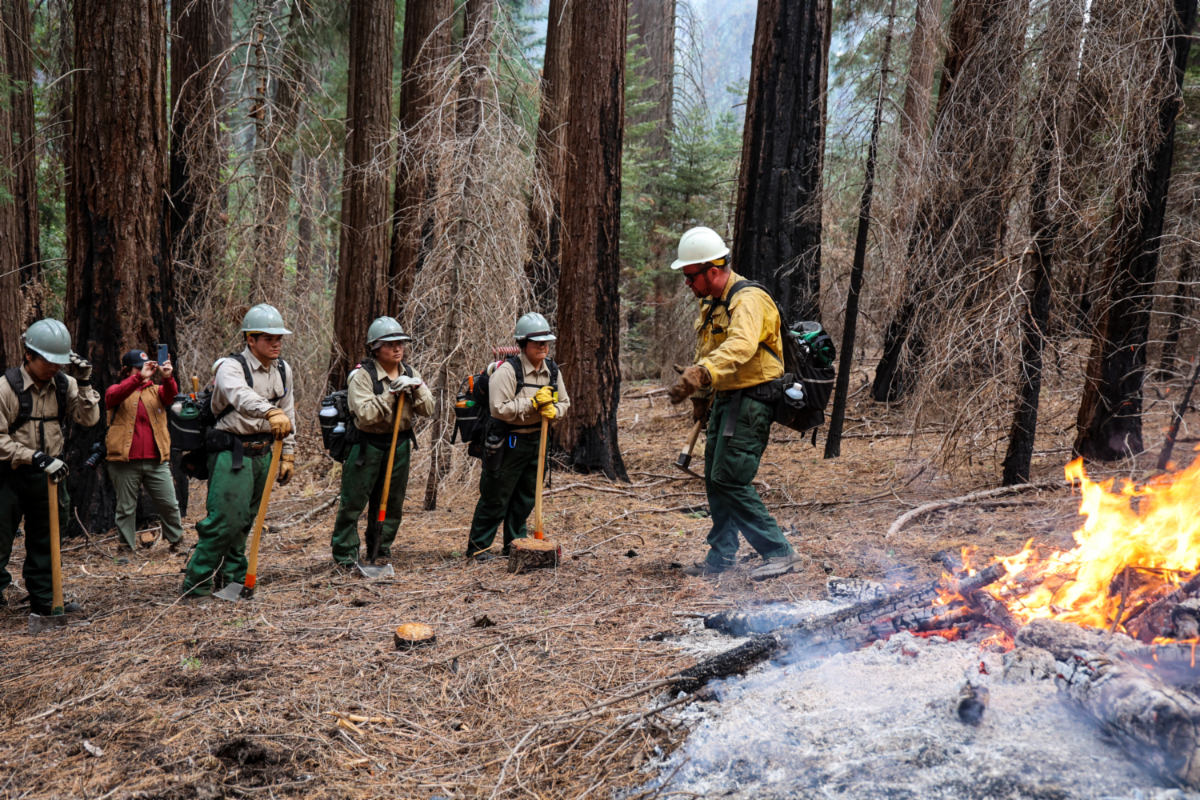
CAL FIRE Awards Nearly $10 Million to Support Tribal Wildfire Resilience and Boost Forestry Workforce
August 1, 2025 – CAL FIRE awarded nearly $4.7 million through its Tribal Wildfire Resilience Program to support six tribes and tribal non-profits in implementing projects on tribal, federal, and private lands. These grants focus on cultural fire, workforce training, fuels reduction, reforestation, land stewardship, and other efforts that promote wildfire resilience and safety for tribal communities. The funding also supports the use and promotion of Traditional Ecological Knowledge to help California Native American tribes manage their ancestral lands.
August 18, 2025 – CAL FIRE announced $5 million in grant funding through its Business and Workforce Development Grant program to eight projects that will create jobs, train future forestry workers, and help small businesses expand their role in protecting California’s forests and communities from wildfire. Together, these eight projects will train more than 300 people, create or retain dozens of jobs, and increase the capacity to treat thousands of acres per year.
New Outreach Efforts Bring Attention to Wildfire and Forestry Careers
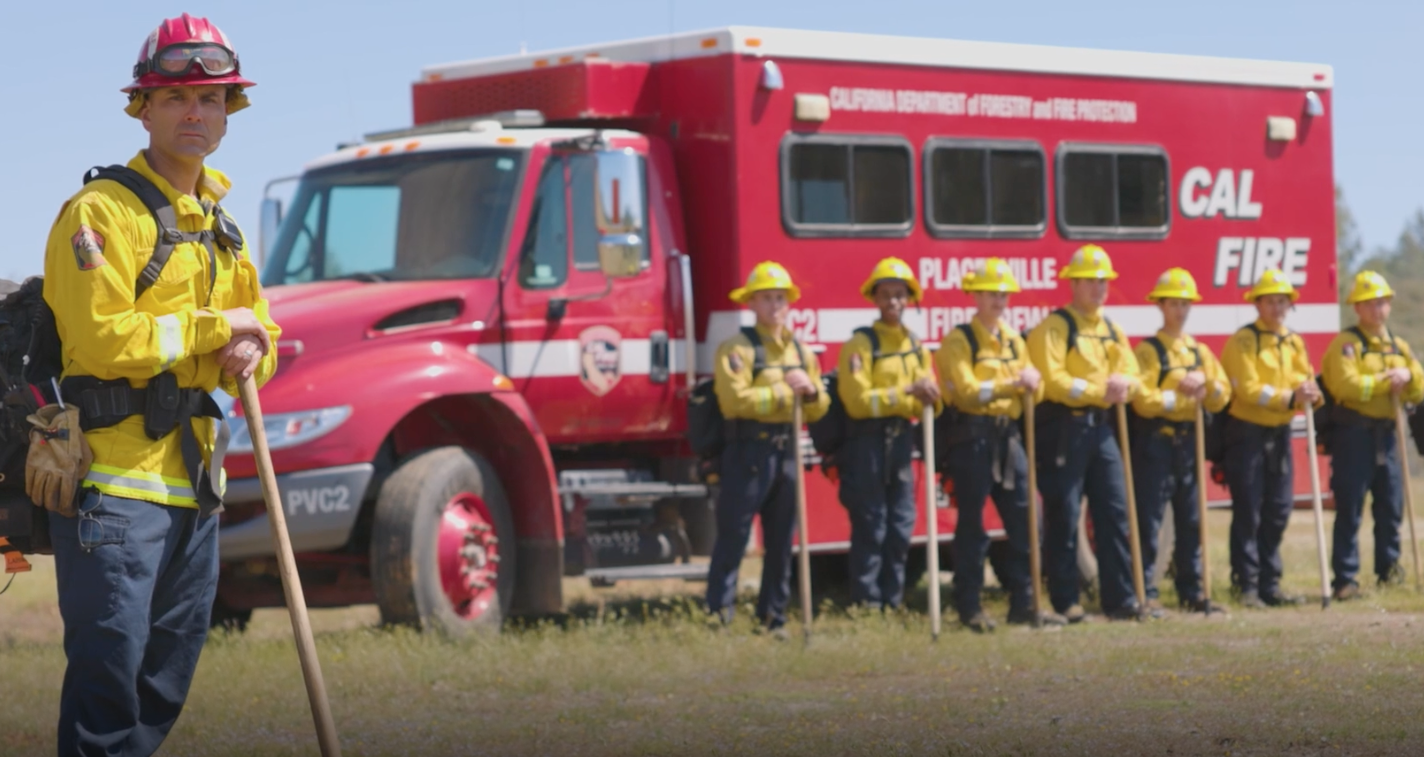
New Outreach Efforts Bring Attention to Wildfire and Forestry Careers
June 11, 2025 – CAL FIRE Launches JoinCALFIRE.com with Comprehensive Information on the Department’s Career Paths:
Key features of JoinCALFIRE.com include: streamlined application paths for both entry-level and advanced positions; detailed job requirements, training information, and career progression insights; a calendar of statewide job fairs and hiring events; and direct access to applications and recruiter information.
The Foundation for California Community Colleges Hosts Climate Futures Webinar Series and Wins a Telly:
- The Foundation for California Community Colleges (FoundationCCC) and Community College Research Center is hosting a webinar series on “Community Colleges and Climate Futures.” The series is exploring how students can be prepared to contribute meaningfully to sustainable local economies and what role colleges can play in strengthening partnerships with businesses to foster climate adaptation. Webinars held February 25, April 8, and June 17 were recorded an are available online and registration for the August 12 webinar is open. The series will culminate with the Community College Climate Summit, September 29-30 in Anaheim.
- The FoundationCCC’s “Resilient Careers in Forestry Campaign” commercial won a bronze award in the 2025 Telly Awards. In partnership with the FoundationCCC California Resilient Careers in Forestry is leading a multifaceted communications effort designed to motivate individuals to pursue careers in forestry, wildland firefighting, and forest operations, and connect them to the training and education pathways best suited to their individual needs and career goals.
Task Force Releases 2025 Key Deliverables
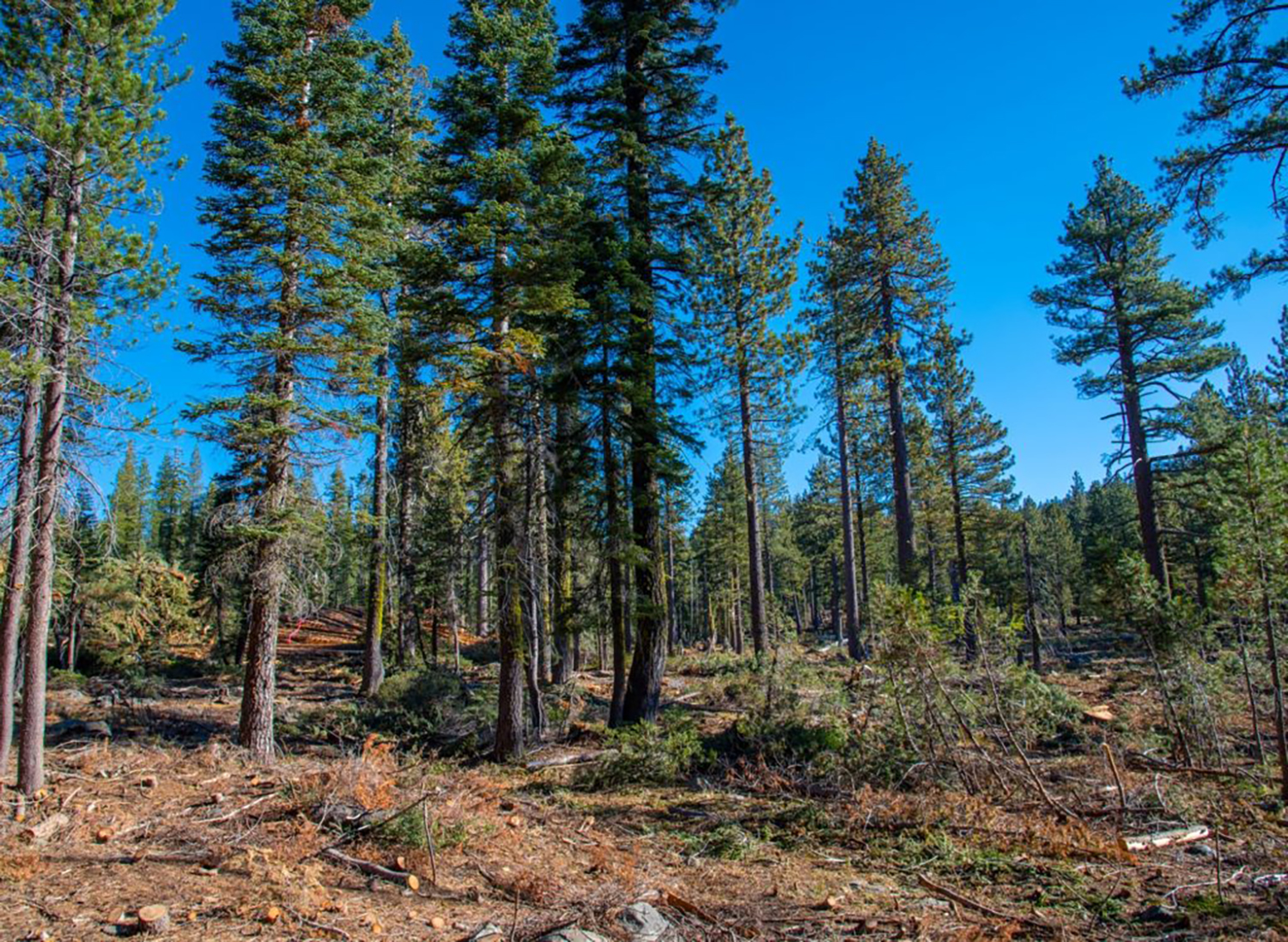
Task Force Releases 2025 Key Deliverables to Outline California’s Top Priorities Underway to Increase Wildfire Resilience
March 24, 2025 – The Task Force released its 2025 Key Deliverables, which include California’s top priorities and initiatives now underway to continue promoting wildfire and community resilience across the state.
The deliverables outline the highest priority actions underway this year to achieve the commitments in the 2021 Wildfire and Forest Resilience Action Plan and to advance key new initiatives that will be highlighted in the forthcoming update of the Action Plan to be released later this year.
The deliverables focus on actions that will improve home and community wildfire resilience, expand landscape-scale resilience programs, streamline regulatory processes, expand timber production and more.
Task Force Director Patrick Wright provided an overview of the 2025 Key Deliverables during the Director’s Report at the March 27 Spring Region Meeting. Click under Resources to the see the video.
California Passes Proposition 4 — Providing $1.5 Billion for Wildfire Resilience
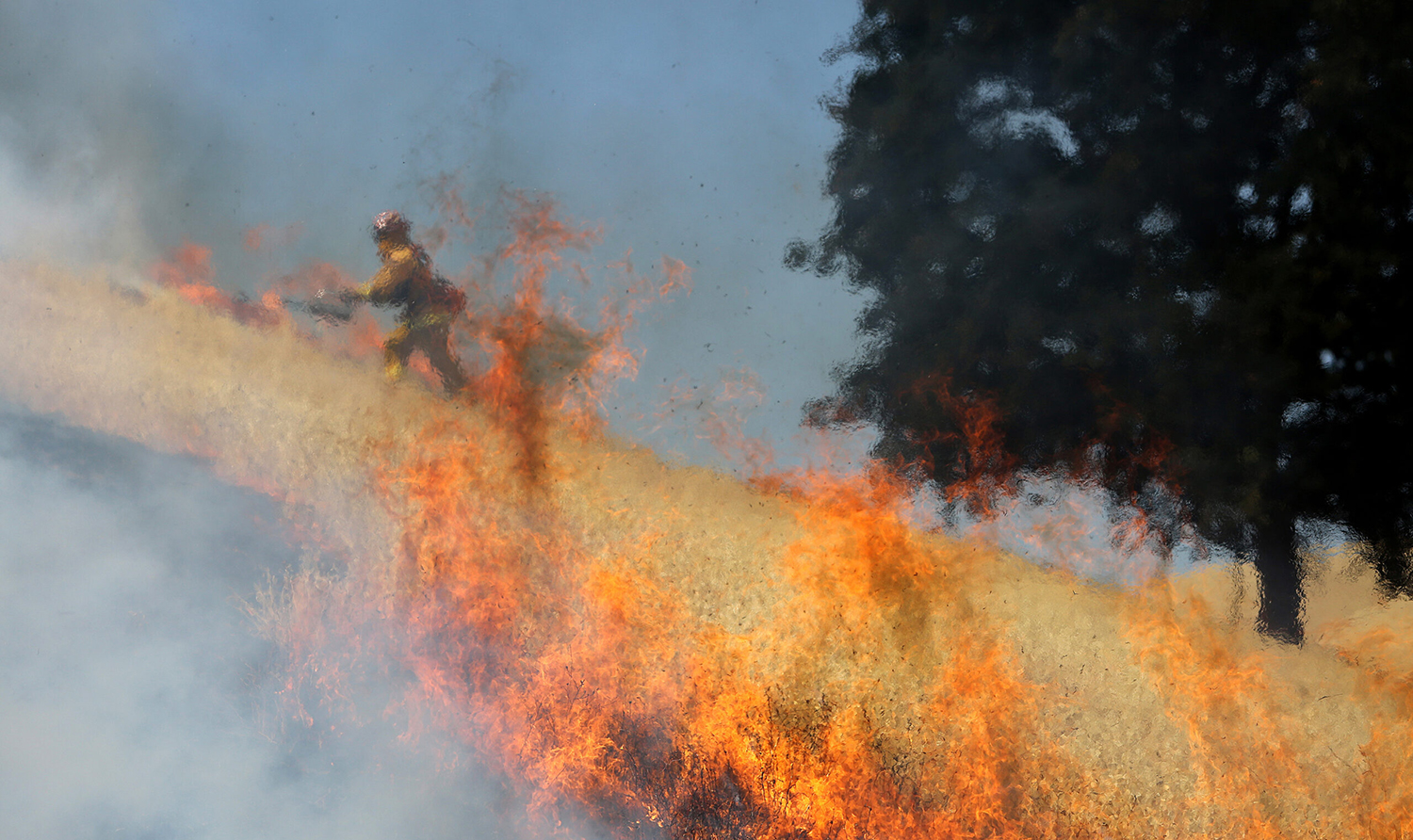
California Passes Proposition 4 — Providing $1.5 Billion for Wildfire Resilience
November 5, 2024 – Californians passed Proposition 4, the first-ever climate bond to go before California voters. The proposition provides $10 billion in bond funds for critical wildfire, flood protection, and other climate resilience projects around the state, including $1.5 billion for wildfire resilience. This funding will enable agencies to improve landscape health and resilience and protect communities from wildfire risks through programs such as the Regional Forest and Fire Capacity Program. The funding also includes $50 million for long-term capital infrastructure projects that utilize wildfire mitigation waste for non-combustible uses.
In addition to funding wildfire resilience, $1.2 billion will be used to protect natural lands and preserve biodiversity, with $870 million directed to the Wildlife Conservation Board to help the state to meet its goal to protect 30% of lands by 2030. The approval of Proposition 4 is a major advancement for California’s efforts to increase the pace and scale of wildfire and landscape resilience treatments, adapt to a changing climate, and reach goals set in the California’s Wildfire and Forest Resilience Action Plan.
State and Federal Investments Conserve Forestlands in Perpetuity
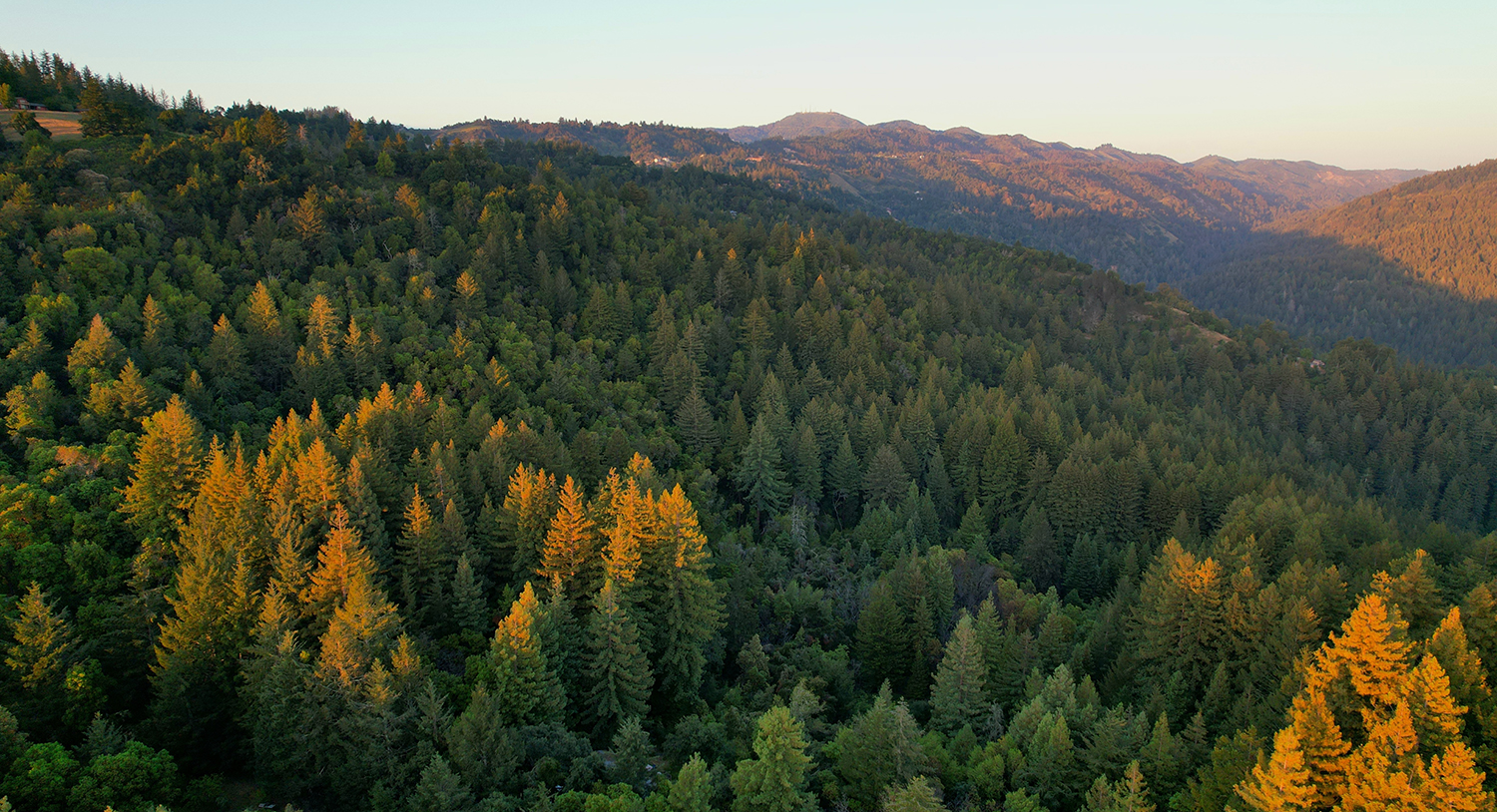
State and Federal Investments Conserve Forestlands in Perpetuity
October 29, 2024 – CAL FIRE and the U.S. Forest Service have announced grant awards to protect forestlands threatened with conversion to non-forest uses. Together, these investments improve forest health and reduce wildfire risk throughout the state.
CAL FIRE awarded $8.5 million through California Forest Legacy to four projects that ensure long-term land stewardship on properties that will continue to provide, in perpetuity, such benefits as sustainable timber production, wildlife habitat, recreation opportunities, carbon sequestration, watershed protection, and open space. One funded project will enable the Colfax-Todds Valley Consolidated Tribe to acquire the Owl Creek property in Placer County; while Placer Land Trust will hold a conservation easement to ensure protection of the property, the Tribe will manage the land using Indigenous management practices.
The USFS awarded more than $265 million to 21 projects nationwide through the federal Forest Legacy program to conserve nearly 335,000 acres of private forestlands. In California, a $1.5 million grant will conserve 94 acres of unique montane mixed-conifer forest in the recreation destination of Lake Arrowhead, east of Los Angeles. The property provides habitat for 7 federal and 4 state species of concern.
CA State Parks and Partners Treat Over 900 Acres with Beneficial Fire
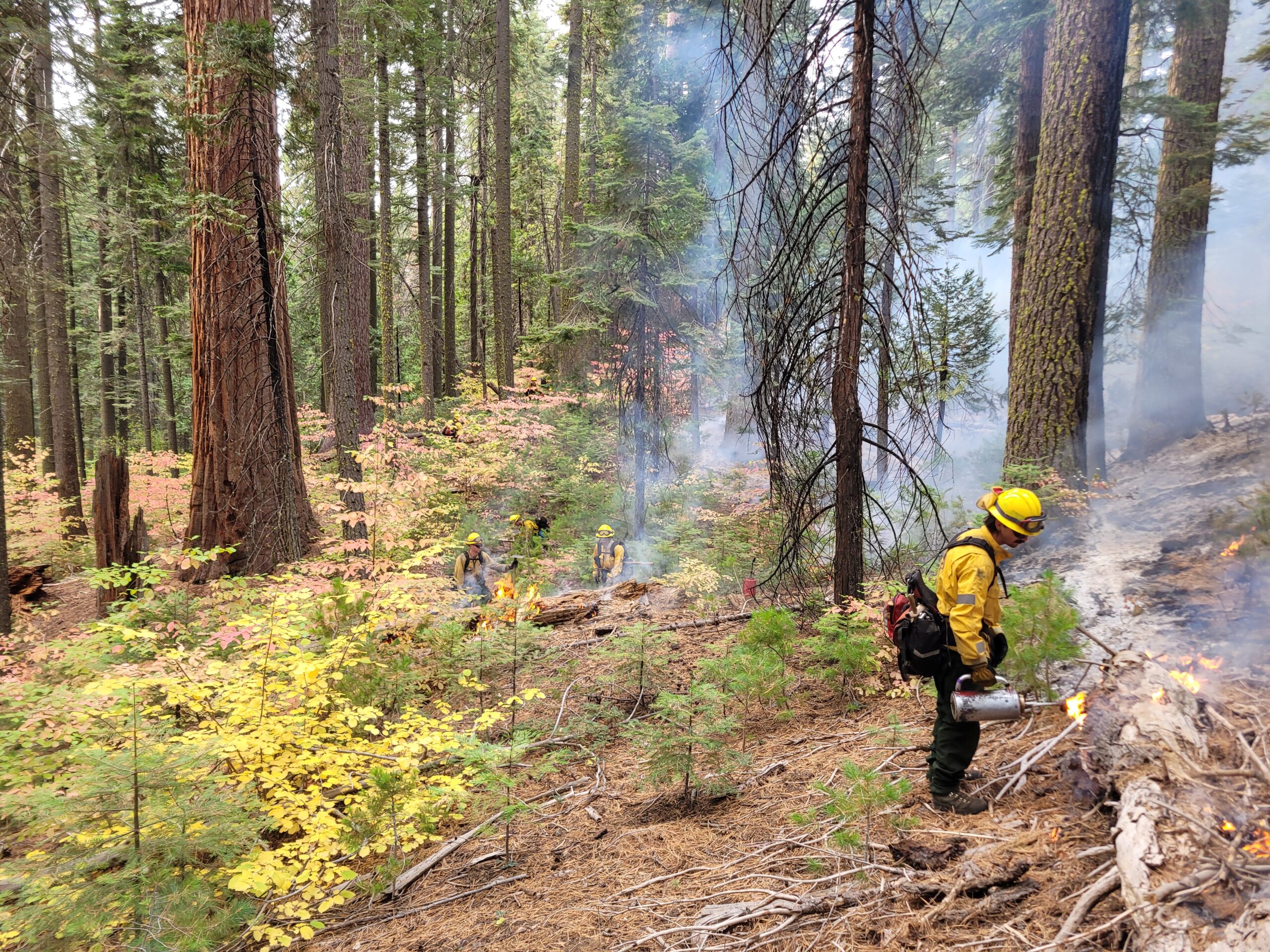
photo by: Richard Rappaport
CA State Parks and Partners Treat Over 900 Acres with Beneficial Fire
From October 29 to November 1, California State Parks with the assistance of CAL FIRE and the USFS treated 914 acres in the South Grove Natural Preserve at Calaveras Big Trees State Park with prescribed fire.
State Parks, CAL FIRE, USFS and contractors spent years organizing interagency collaboration and preparing the perimeter along with the giant sequoia trees for beneficial fire. Preparation included using mechanical treatments appropriate for State Parks Natural Preserves to remove large fuels from the surrounding fire road and using hand tools to remove large material from the base of over 700 mature giant sequoias.
The entire South Grove Natural Preserve is over 1,300 acres. Critical to giant sequoia stewardship and regeneration, State Parks will continue to be prepared to treat the remaining acres and bring fire back to the entire landscape in regular intervals. This project restores and maintains a complex forest community, promotes giant sequoia regeneration and wildfire resilience, reduces hazardous fuel loads, improves wildlife habitat, and protects park infrastructure.
CAL FIRE & USFS Investments Confront California’s Wildfire Crisis & Expand Urban Forests
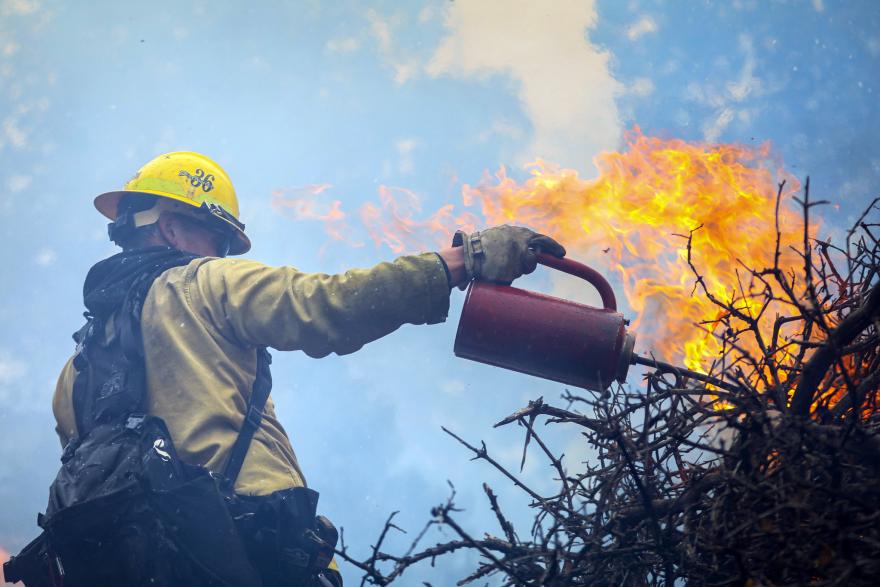
CAL FIRE & USFS Investments Confront California’s Wildfire Crisis & Expand Urban Forests
October 17 – USFS Invests $15 Million to Confront California’s Wildfire Crisis
The U.S. Forest Service (USFS) announced $100 million will be invested in 21 new projects to expand work on the USFS Wildfire Crisis Strategy to reduce the threat of wildfire in high-risk areas across the country. $15 million will fund three projects in California helping further Task Force goals of protecting communities in the Wildland Urban Interface.
- Sequoia National Forest – $5 million to reduce wildfire risk to the Breckenridge and Pine Flat communities through thinning and prescribed fire, with wood byproducts going to a biomass facility or the local sawmill when viable.
- Eldorado National Forest – $5 million for hazardous fuels reduction, strategic fuels breaks, and prescribed fire on the Georgetown Divide. The project will also create strategic fuel breaks near residential and commercial infrastructure in Volcanoville and Georgetown, including a high-powered electric transmission line.
- Tahoe National Forest – $5 million to reduce hazardous fuels, create defensible space around six communities, create safe ingress and egress along 6.3 miles of road, and engage at least seven partner groups, including local tribes.
September 20 – CAL FIRE and USFS Award $31 million to 22 Urban Forestry Projects in California
CAL FIRE and USFS announced nearly $31 million in Urban and Community Forestry grants in California focused on urban forestry topics of management, expansion and improvement, education, workforce development, capacity building, and green schoolyards. The projects are intended to reduce greenhouse gas emissions, improve the functionality of urban forests, arrest the decline of urban forest resources, address climate change resilience, improve the quality of the environment in urban areas, and increase access to environmental career pathways. All funded projects will directly serve priority populations within one or more defined disadvantaged and/or low-income communities in an urban area.
CAL FIRE Forest Health Research Grant Program: Applications are now open for the Forest Health Research Program which is offering $4 million in research funding through its FY 2024-2025 grant solicitation. These grants will support research that directly benefits landowners, resource agencies, fire management organizations, and decision-makers throughout the state.
CAL FIRE Dashboard Shows Effectiveness of Fuels Treatments on Recent Wildfires
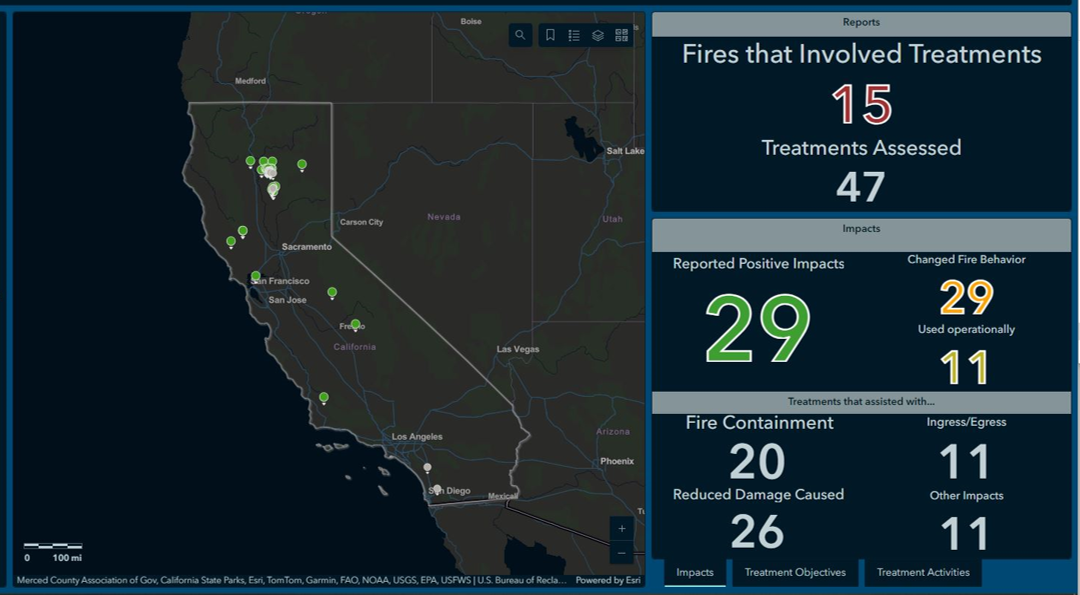
New CAL FIRE Dashboard Shows Effectiveness of Fuels Treatments
On October 10, 2024, CAL FIRE launched its Fuels Treatment Effectiveness Dashboard to show how on-the-ground projects are protecting communities and landscapes when wildfire strikes, a key initiative of the Task Force. The dashboard displays Fuels Treatment Effectiveness Reports which evaluate the impacts vegetation management treatments have on fire behavior and highlight how fuel reduction activities not only assist in suppression efforts but also protect life, property, and the natural resources of California.
Fuels Treatments are areas where fuel reduction activities have been conducted, with the primary objective of reducing fuel loading. Treatments that are considered for evaluation include:
- Treatments that have been completed or have had activities in the last seven years.
- Objectives of:
- Broadcast Burn
- Fuel Reduction
- Fuel Break
- Right of Way Clearance
- California Forest Improvement Program (CFIP) projects with fuel reduction activities (e.g. thinning, pruning, piling).
- Fire plan, Vegetation Management Program (VMP) and California Vegetation Treatment Program (CalVTP) activities completed by CAL FIRE or Contract Counties.
- Wildfire Prevention and Forest health grant-funded projects including work performed by grantees and contractors.
Treatment Effectiveness is the effect a fuel reduction treatment has on fire behavior, ingress or egress, and fire suppression.
Examples of Positive Impact include: assisted with fire containment, ingress/egress, reduced property damage, or changing fire behavior.
Examples of treatments that Changed Fire Behavior include: halted rate of spread, slowed rate of spread, or reduced fire intensity.
Examples of treatments that Contributed to Control of Fire include: used as a primary or secondary containment line, provided ingress/egress for fire suppression personnel.

